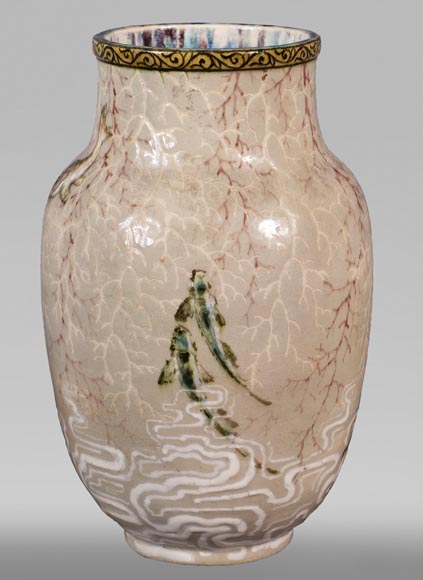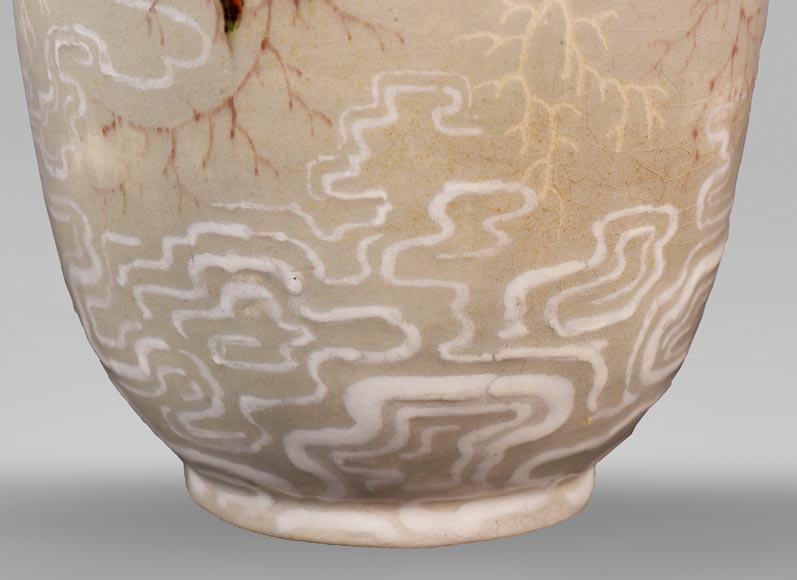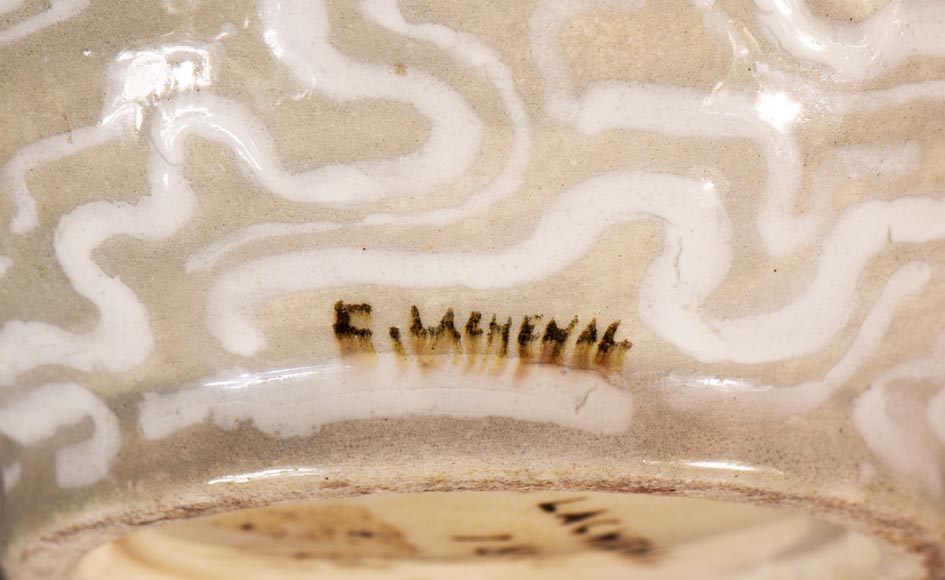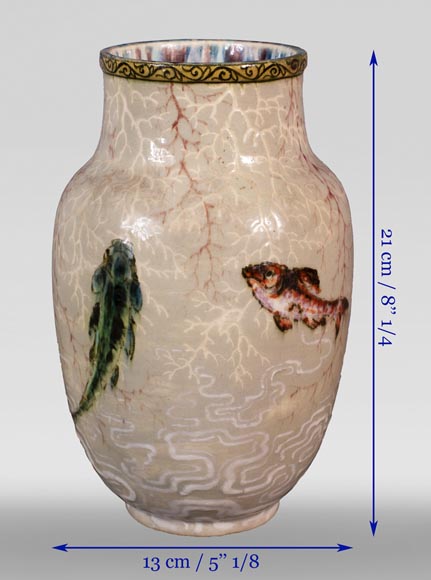Style Japonism, Chinoiserie / Ref.11993
Edmond LACHENAL (1855-1930) - Glazed ceramic ovoid vase with carp decoration
Dimensions
Height 8'' ¼ 21cm
diameter: 5'' ⅛ 13cm
Origin:
France, 19th century
Status:
Good condition.
This glazed ceramic vase was realized in 1890 by Edmond Lachenal (1853 – 1948), famous French ceramicist. The artist's signature “E. Lachenal” was put twice, one at the bottom of the vase, the other under it with the date of realization “1890”.
Edmond Lachenal has contributed to the rebirth of ceramic at the end of the 19th century. After an apprenticeship in 1870 with the ceramicist master Théodore Deck (1823 – 1891) to whom we owe the famous “blue Deck”, Edmond Lachenal decides to have his own atelier in the Parisian area in 1880. He starts by being inspired by the Hindu and Persian arts, then leads his work toward the Japanese art and the Art Nouveau style, while creating a velvet or frost enamel thanks to an electrolysis proceed. It's especially thanks to his representations imitating the nature and the purity and strength of his colors that he excels and seduces the public, even some contemporary artists such as Auguste Rodin (1840 – 1917). By the forms and the decor but also the making proceeds, Edmond Lachenal showed himself as an innovator, which gave him an immediate success.
Our vase depicts a poetic decor with Japanese aspiration. We see five fishes in different positions and with different colors, each represented in a realistic way. They look like koi carps swimming in a beige background without real distinction between the water and the ground. However, the difference is visible between the decor made with pasta on pasta depicting roots on the upper part and the vibrant waves of the water on the inferior part. This space representation is typical of the Japanese art and especially of stamps whose decors question the Occidental art's basement by their absence of perspective. This aesthetic has created a turn over in the 19th century arts after its discovery during the International Exhibitions and a lot of artists inspired themselves.
The pasta on pasta technic was created at the Sèvres manufactory around 1848. More often used by sculptors, it consists on applying some motif generally white on colored background to make them in relief. As an innovator, it's not surprising that our artist, Edmond Lachenal, used it in the realization of this vase.
Other works of art made by the artist are exhibited in a lot of French Museum, especially in the Musée d'Orsay in Paris. We can also find some of his work in the Metropolitan Museum of Art in New York, in particularly, a vase with also a Japanese decor, showing an alternation of blue bands with white abstract motif of pasta on pasta and white bands with cherry tree branches blooming.
Informations
Price: on request
Recommended for you :
Dimensions:
Height: 8
Diameter: 61
Dimensions:
Height: 9
Diameter: 32
Dimensions:
Height: 55
Diameter: 24
Dimensions:
Height: 55
Diameter: 22
Dimensions:
Height: 33
Diameter: 36
Dimensions:
Height: 4
Diameter: 30
Dimensions:
Height: 4
Diameter: 30
Dimensions:
Width: 34
Height: 12
Depth: 34
Dimensions:
Width: 72
Height: 164
Depth: 11
Dimensions:
Height: 48
Diameter: 42
Dimensions:
Width: 33
Height: 26
Dimensions:
Width: 25
Height: 48




























